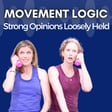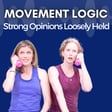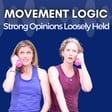
86: What the Osteoboost?
In this in-between episode of the Movement Logic Podcast, Sarah discusses a new product for osteopenia called Osteoboost, a wearable medical device that uses gentle vibrations to improve bone density and strength, offering a non-invasive alternative to traditional treatments. Sarah delves into the research behind the device, its FDA clearance, and its effectiveness compared to medication and exercise. She emphasizes the importance of heavy lifting for bone health, and expresses concerns about people relying solely on passive treatments like Osteoboost instead of engaging in comprehensive exercise routines.
00:00 Introduction and Episode Overview
02:20 Introduction to Osteoboost
03:00 How Osteoboost Works
04:30 Research and Development Behind Osteoboost
09:30 Clinical Trials and Results
13:37 Comparing Osteoboost to Traditional Treatments
17:21 Final Thoughts and Recommendations


